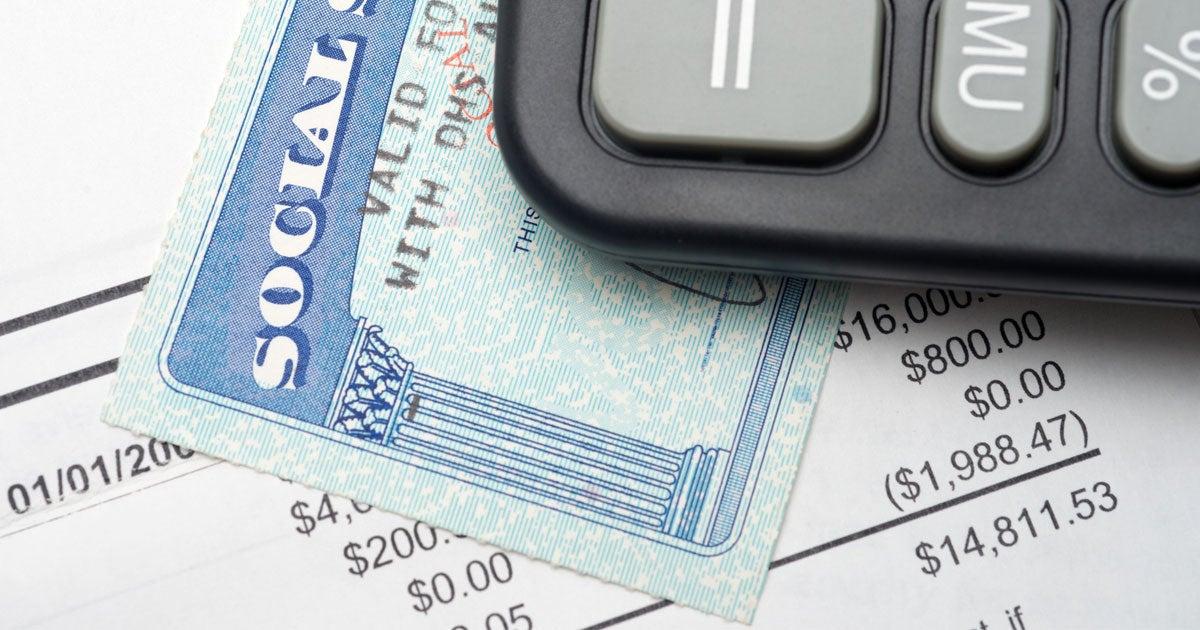Can You Get Both Supplemental Security Income (SSI) and Social Security?
5 min read

Related Topics
If you’ve heard about Supplemental Security Income (SSI) but weren’t sure you qualified because of your Social Security benefit, you may want to explore your eligibility for this vital federal program.
Roughly half of the people 65 and older who get SSI benefits also receive Social Security.1
SSI, which is administered by the Social Security Administration (SSA), provides minimum basic financial assistance to adults 65 and older and people with disabilities (regardless of age) who have very limited income and resources. The maximum monthly benefit is $967 for individuals and $1,450 for couples.
Payments vary based on your income and where you live.2
Even though the SSA administers both programs, they are completely different. In December 2025, the average monthly SSI payment for people 65 and older was $593.961—that’s income that can go a long way toward helping meet the rising costs of living.
What is the difference between Social Security and SSI?
The two programs are independent of one another, and distinct. Here are some of the ways they differ:3
- You may receive Social Security benefits if you’ve worked long enough and paid Social Security taxes. SSI benefits are based on need and not your work history.
- SSI is for people with limited income and resources. There are no income and resource limits for people receiving Social Security.
- SSI is financed by general funds from the U.S. Treasury—from sources like corporate and income taxes. Social Security’s funding comes from a dedicated payroll tax paid by employers and workers.
- Qualifying for SSI payments may also make you eligible for other need-based programs. Depending where you live, you may also be able to receive Medicaid, a supplemental payment, and food assistance.
How much Social Security can I get and still qualify for SSI?
SSI payments are based on your income and other resources. To calculate your SSI eligibility, the SSA adds up all the income you receive, which would include your monthly Social Security benefit. Then, it deducts certain payments it doesn’t count as income. What remains is called your “countable income,” which is what your SSI benefit amount would be based on.
Under SSI, income is defined as “any item an individual receives in cash or in-kind that can be used to meet his or her need for food or shelter.”
Income includes:4
- Wages from a job or self-employment
- Social Security benefits, pensions, unemployment benefits, and cash support from family or friends
- A portion of your spouse’s income, if you are married
- The value of food and shelter you may receive for free or at a discount
Here are some of the payments you might receive that the SSA doesn’t count and will deduct from your gross income:4
- The first $20 of most income received in a month
- The value of Supplemental Nutrition Assistance Program (SNAP) benefits you receive
- Income tax refunds
- Home energy assistance
- Food or shelter, based on need, that nonprofit agencies provide to you
And, there are limits on how much income you can have:5
- For individuals, there’s a monthly maximum of $2,019 if the income is only from wages and $987 if it is income not from wages.
- For couples, the monthly maximum is $2,985 if the income is only from wages and $1,470 if it is income not from wages.
I only get Social Security. Can you give me an example of an SSI benefit amount?
Let’s assume you are an older adult whose sole source of income is a $600 monthly Social Security benefit. Here’s a sample calculation:4, 5
1. Determine countable income
$600 (Social Security benefit)
-$20 (not counted)
------
$580 (countable income)
2. Calculate the SSI benefit amount
$967 (2025 SSI federal benefit rate)
-$580 (countable income)
-------
$387 (SSI federal benefit)
Remember, this just a very simple example used to illustrate how an SSI benefit might be determined. As you can see, there are many variables the SSA will consider when determining your countable income. If you apply for benefits, an SSA representative will guide you through the process.
What else should I know about SSI eligibility for older adults?
There is one other financial qualification. To receive an SSI benefit, you can have no more than $2,000 in countable resources (things you own) as an individual, or $3,000 as a couple.
Also, SSI recipients must be U.S. citizens, U.S. nationals, or noncitizens meeting certain requirements, and reside in one of the 50 states, the District of Columbia, or the Northern Mariana Islands.
How can I find out for sure if I qualify for SSI payments?
The SSA’s SSI tool is a good place to start. It only takes 5-10 minutes. While walking through the process, the tool will document your intent to file an application and establish a protective filing date. This protective filing date will determine when your payments will begin if your application is approved. SSI can only be paid from the date of your application and moving forward. So, if you think you’re eligible, the SSA advises you to apply soon so you don’t miss out on valuable benefits.6
It's important to note that using the SSI tool is not an application for SSI benefits. You must file an application with SSA to receive a formal determination of eligibility. Once you submit the information, SSA will schedule an appointment to file the application.
BenefitsCheckUp® can also help you assess your eligibility for SSI and other programs that can help you afford health care, medicine, food, and utilities. Simply start by entering your ZIP code.
Sources
1. Social Security Administration. Monthly Statistical Snapshot. July 2025. Found on the internet at https://www.ssa.gov/policy/docs/quickfacts/stat_snapshot/
2. Social Security Administration. SSI Federal Payment Amounts for 2025. Found on the internet at https://www.ssa.gov/oact/cola/SSI.html
3. Social Security Administration. Supplemental Security Income (SSI) Overview. 2025. Found on the internet at https://www.ssa.gov/ssi/text-over-ussi.htm
4. Social Security Administration. Supplemental Security Income (SSI) Income. 2025. Found on the internet at https://www.ssa.gov/ssi/text-income-ussi.htm
5. Social Security Administration. 2025 Update. January 2025. Found on the internet at https://www.ssa.gov/pubs/EN-05-10003.pdf
6. Social Security Administrations. Supplemental Security Income (SSI) Application Process and Applicants’ Rights. 2025. Found on the internet at https://www.ssa.gov/ssi/text-apply-ussi.htm



